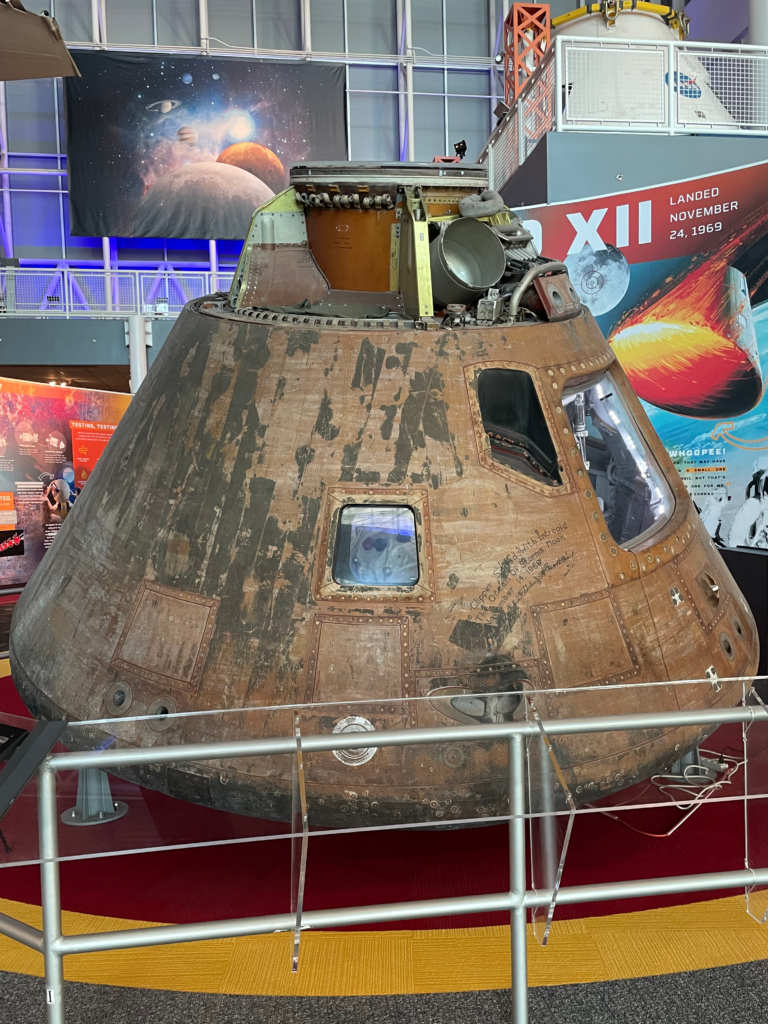 Apollo 12 Command Module
Apollo 12 Command Module
Yankee Clipper At the heart of the Virginia Air Space Science Centers collection is the Apollo 12 Command Module, Yankee Clipper — a true marvel of engineering and a testament to human achievement. This historic spacecraft carried astronauts Charles Pete Conrad, Richard Gordon, and Alan Bean on the second successful Moon landing mission in November 1969. During its mission, Yankee Clipper spent over 244 hours in space and completed 45 orbits of the Moon. While Conrad and Bean descended to the lunar surface in the Lunar Module Intrepid, Gordon remained in orbit aboard Yankee Clipper, conducting scientific observations, photographing future landing sites, and performing critical mission support operations. Visitors can view the meticulously preserved capsule up close — noting the burn marks from atmospheric reentry — and gain insight into the astronauts’ experience as they lived and worked inside the module during their historic journey.
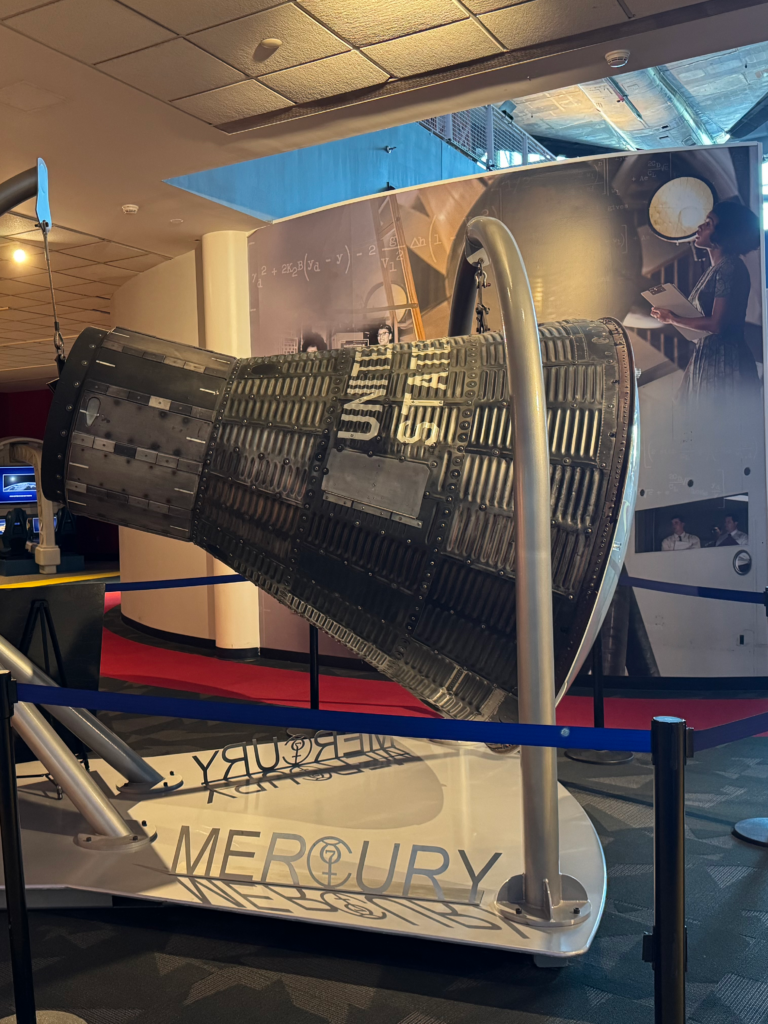 Mercury Capsule
Mercury Capsule
Step back to the dawn of the Space Age with the Mercury capsule, a compact, one-person spacecraft that represented Americas first bold leap into human spaceflight. Project Mercury (1958–1963) was created to test whether humans could survive and function in space. The capsule on display mirrors the same kind flown by pioneers like John Glenn, the first American to orbit Earth. Standing before the Mercury capsule, guests are struck by its modest size — roughly that of a phone booth — and the minimal controls and accommodations inside. Despite its simplicity, it endured intense launch forces and the fiery return through Earth’s atmosphere. This exhibit captures both the technological innovation of early NASA and the bravery of astronauts who climbed into these tiny capsules to explore the unknown.
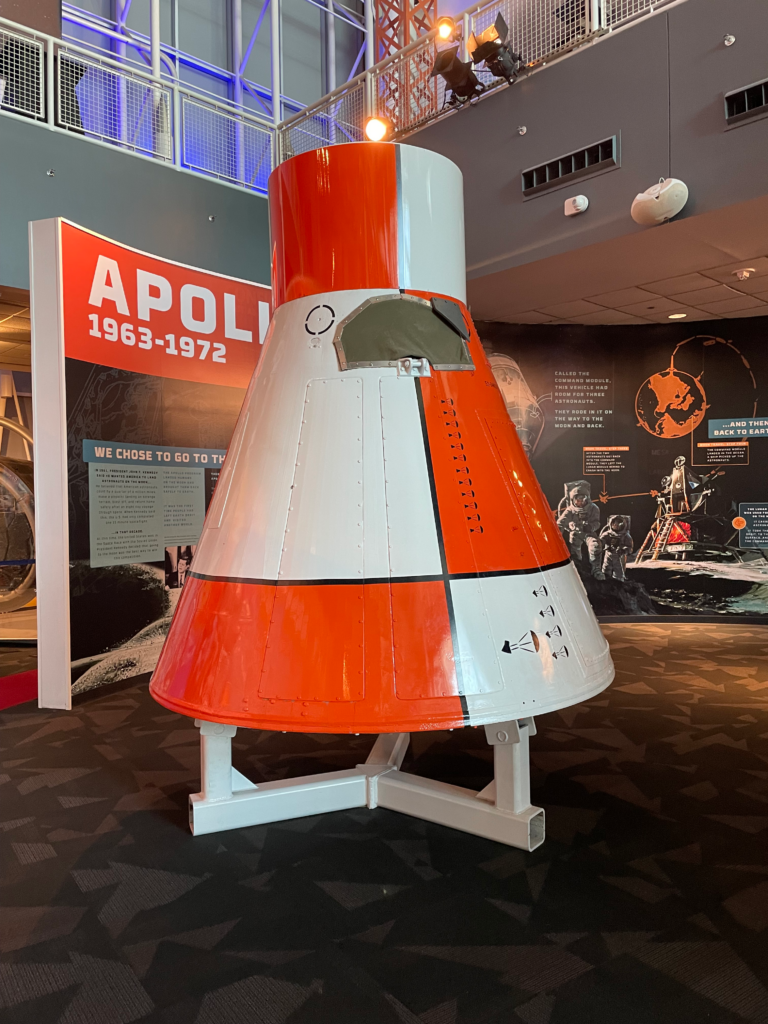 Gemini Capsule
Gemini Capsule
A vital stepping stone between the Mercury and Apollo programs, the Gemini capsule on display showcases NASA’s efforts to prepare for extended missions in space. Used between 1961 and 1966, the two-man Gemini spacecraft allowed astronauts to perform the first American spacewalks, practice docking with other vehicles, and test systems critical for Moon missions. Visitors will notice the roomier interior compared to Mercury, though still extremely confined by modern standards. Through interpretive displays, you can learn how Gemini missions taught astronauts to live and work in space for longer durations, control orbital mechanics manually, and conduct precise maneuvers that would later prove essential for lunar landing procedures.
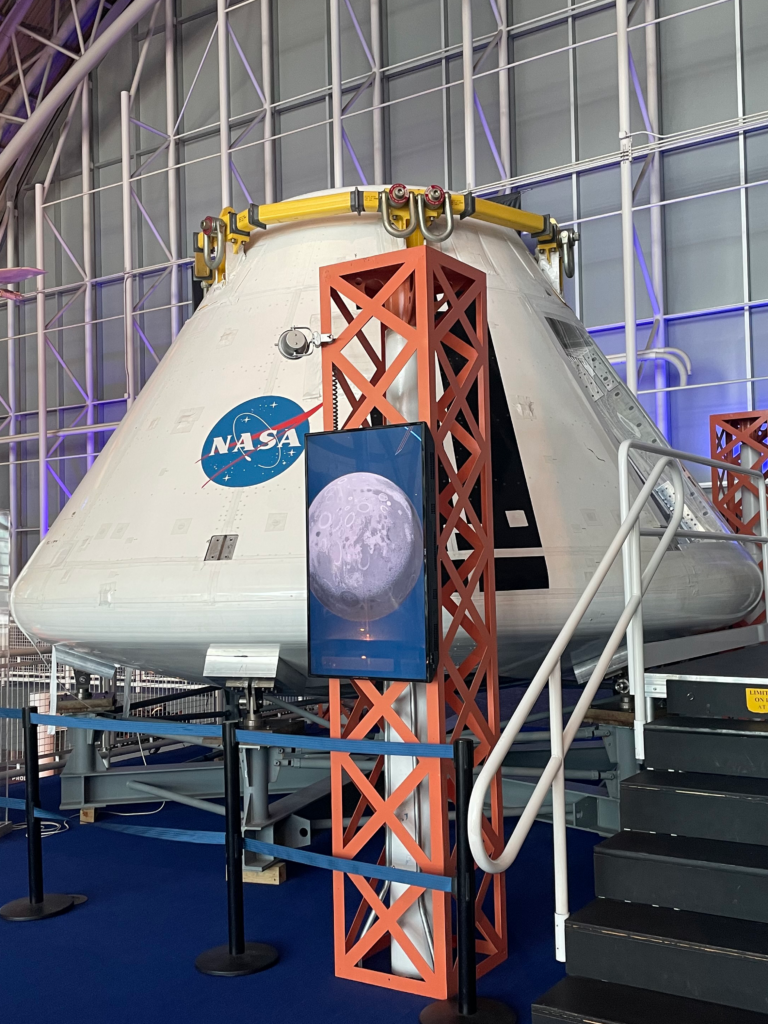 Orion Pad Abort-Test Vehicle
Orion Pad Abort-Test Vehicle
Looking ahead to NASA’s next great chapter, the Orion Pad Abort-Test Vehicle exemplifies the space agency’s commitment to safety and crew survivability. This test unit was used in 2010 to validate Orion’s launch abort system, designed to rapidly separate the crew module from a failing rocket during launch — a critical feature for ensuring astronaut safety on future deep space missions.
Displayed in its rugged, industrial form, the vehicle gives visitors a rare glimpse at the raw,
functional side of spaceflight development. Informational panels detail the launch test, where the vehicle accelerated from zero to 445 mph in just over 2 seconds, simulating a real-life emergency escape scenario. This technology is a key component of NASA’s Artemis program, which will return humans to the Moon and eventually take us to Mars.
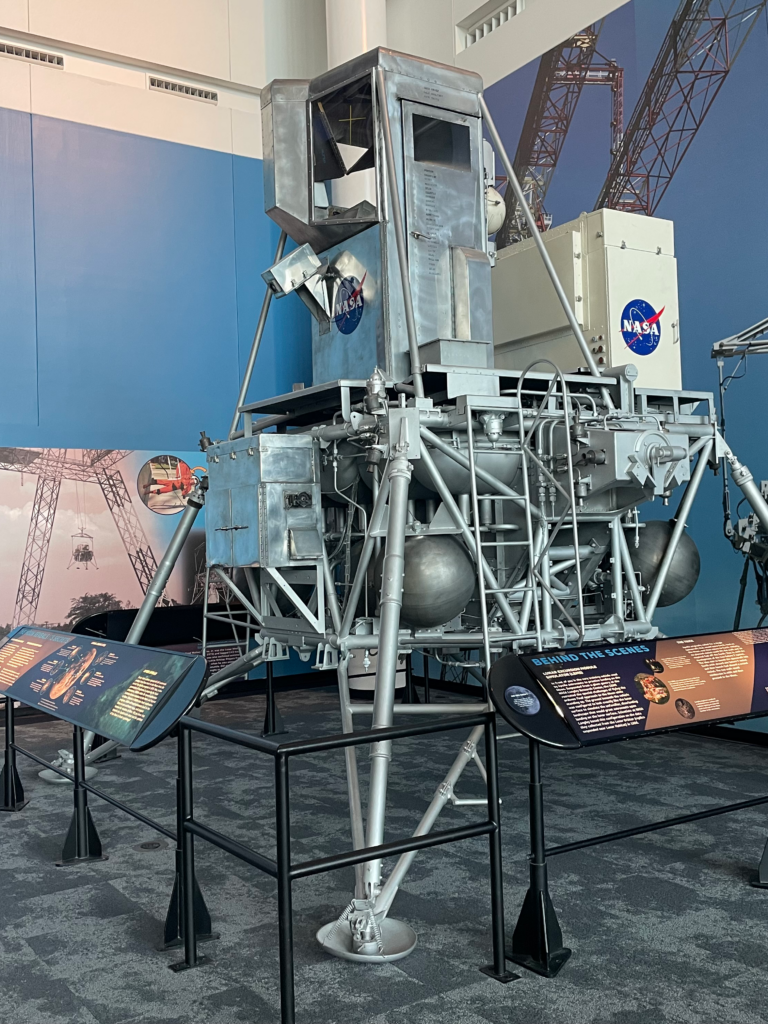 Lunar Excursion Training Module Simulator
Lunar Excursion Training Module Simulator
One of the most exciting hands-on experiences at the Center is the Lunar Excursion Module Simulator, based on the same training principles used at NASA Langley’s Lunar Landing Research Facility. In this interactive exhibit, visitors can step into the shoes of an Apollo astronaut, using realistic controls to attempt a virtual lunar landing. With simulated low-gravity physics and terrain-based challenges, the exhibit replicates the complexities of descending to the Moon’s surface — from fuel management to thruster timing. Its a fun, educational challenge that connects modern visitors with the high-stakes decision- making Apollo astronauts had to master before their real Moon missions. Used to simulate landing the Lunar Module on the lunar surface in the training of Apollo astronauts. During training, the module was suspended from Langley’s Lunar Landing Research Facility over a simulated lunar surface. It allowed the astronauts to familiarize themselves with the handling characteristics of the Lunar Module and piloting problems they would encounter in the last 150 feet of their descent to the surface of the moon. It was used in the 1960’s by Neil Armstrong, Edwin “Buzz” Aldrin, and 22 other astronauts while preparing for their trip to the moon. This exhibit captures the essential training that astronauts went through to prepare for their missions to the moon.
